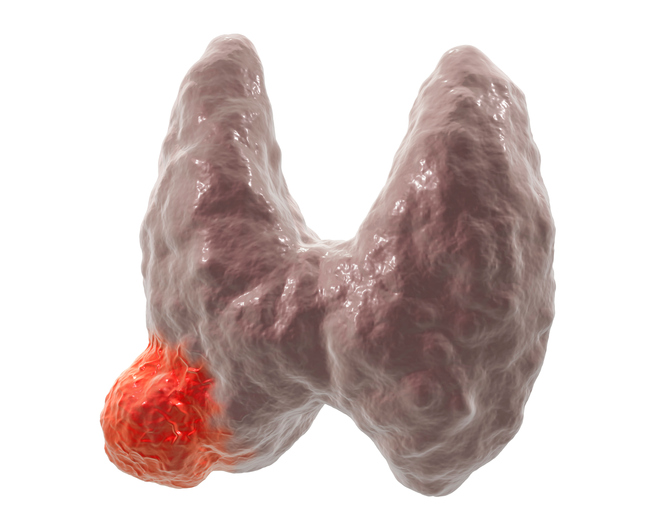- "Thyroid Cancer Treatment". National Cancer Institute. 27 April 2017.
- Carling T, Udelsman R (2014). "Thyroid cancer". Annual Review of Medicine. 65: 125–137.
- "Cancer of the Thyroid - Cancer Stat Facts". seer.cancer.gov. Archived from the original on 15 July 2017. Retrieved 18 July 2017.
- Vos, Theo; et al. (October 2016). "Global, regional, and national incidence, prevalence, and years lived with disability for 310 diseases and injuries, 1990-2015: a systematic analysis for the Global Burden of Disease Study 2015". Lancet. 388 (10053): 1545–1602.
- Wang, Haidong; et al. (October 2016). "Global, regional, and national life expectancy, all-cause mortality, and cause-specific mortality for 249 causes of death, 1980-2015: a systematic analysis for the Global Burden of Disease Study 2015". Lancet. 388 (10053): 1459–1544.
- "Cancer Fact sheet N°297". World Health Organization.
- "Defining Cancer". National Cancer Institute. 17 September 2007.
- Bibbins-Domingo K, Grossman DC, Curry SJ, Barry MJ, Davidson KW, Doubeni CA, et al. (May 2017). "Screening for Thyroid Cancer: US Preventive Services Task Force Recommendation Statement". JAMA. 317 (18): 1882–1887.
- World Cancer Report 2014. World Health Organization. 2014. pp. Chapter 5.15. ISBN 978-9283204299.
- Hu MI, Vassilopoulou-Sellin R, Lustig R, Lamont JP, eds. (2008). "Thyroid and Parathyroid Cancers". Cancer Management: A Multidisciplinary Approach (11th ed.). Lawrence, Kansas: CMP Media. ISBN 978-1-891483-62-2.
- Durante C, Grani G, Lamartina L, Filetti S, Mandel SJ, Cooper DS (March 2018). "The Diagnosis and Management of Thyroid Nodules: A Review". JAMA. 319 (9): 914–924.
- "Radioactive I-131 from Fallout". National Cancer Institute.
- dos Santos Silva I, Swerdlow AJ (February 1993). "Thyroid cancer epidemiology in England and Wales: time trends and geographical distribution". British Journal of Cancer. 67 (2): 330–340.
- "Experts link higher incidence of children's cancer to Fukushima radiation". ScienceAlert.
Thyroid cancer - Symptoms, Diagnosis, and Treatments

Photo source: Getty images
Most common symptoms
- Malaise
- Thickening of the voice
- Sore Throat
- Pain when swallowing
- Hoarseness
- Spirituality
- Sweating
- The Island
- Swallowing disorders
- Dry cough
- Enlarged lymph nodes
- Increased body temperature
Show more symptoms ᐯ
Treatment of thyroid cancer: surgery, oncology and conservative approaches
Show moreThyroid cancer is treated by
Other names
Thyroid cancer,papillary carcinomas, follicular carcinomas, DTC, MTC












